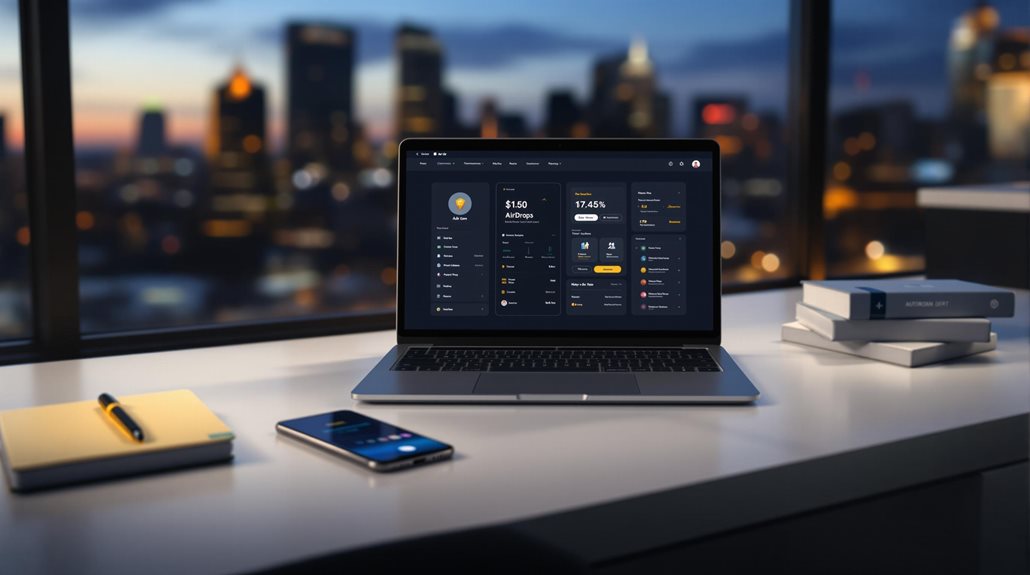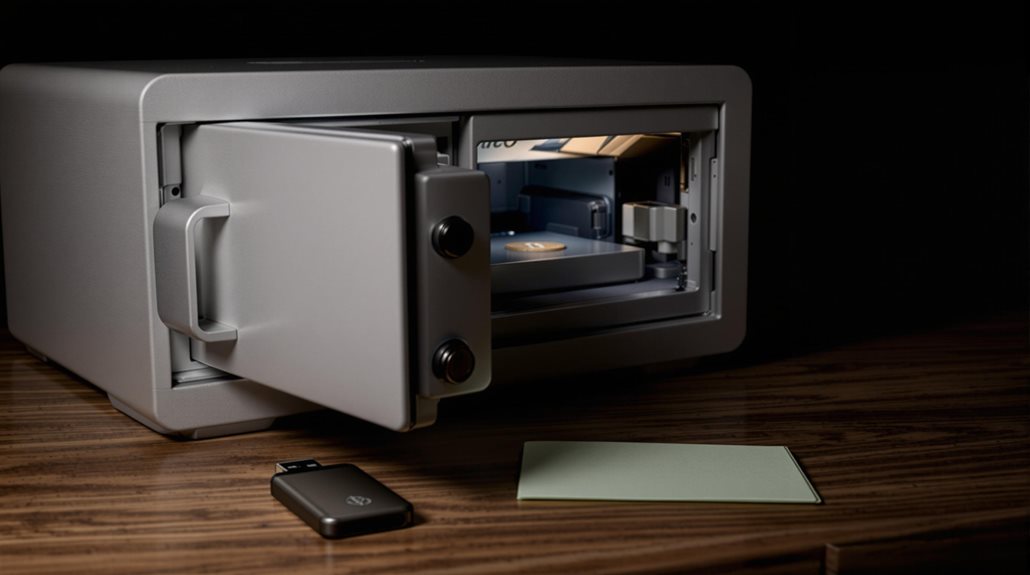To receive cryptocurrency airdrops, participants need a compatible digital wallet that supports the specific token type. They'll typically follow project announcements on social media, join community channels, and complete tasks like retweeting posts or joining Telegram groups. Some airdrops require holding certain cryptocurrencies or completing KYC procedures. The claiming process varies by project, with tokens automatically appearing in wallets after distribution. Understanding each step can make the difference between success and missed opportunities.

Wondering how to get free cryptocurrency tokens? Cryptocurrency airdrops are when blockchain projects distribute free tokens to community members. Getting these tokens requires careful preparation and attention to security measures.
The first step involves setting up a compatible cryptocurrency wallet that supports the blockchain of the airdropped token. Users can choose between hardware wallets, software wallets, or exchange-based wallets. The wallet needs to be compatible with specific token standards, such as ERC-20 for Ethereum-based tokens. Users secure their wallets with strong passwords and backup phrases, carefully verifying their wallet addresses to avoid errors. Project verification helps ensure users connect to legitimate airdrop campaigns.
Finding legitimate airdrops requires thorough research. Cryptocurrency enthusiasts use reputable airdrop aggregator websites to discover opportunities and follow official project social media accounts for announcements. Many participants join cryptocurrency forums and communities to stay informed about upcoming airdrops. Projects typically allocate 10% of token supply for airdrop distributions. It's important to verify airdrop legitimacy through official project channels, as the space contains numerous scams targeting private keys and seed phrases.
Meeting eligibility criteria is essential for receiving airdrops. Projects often require participants to hold specific cryptocurrencies or tokens. Social media tasks, such as following accounts, retweeting posts, or sharing content, are common requirements. Many projects ask users to join their Telegram groups or Discord channels. Some airdrops require community participation or project development contributions. Whitelist registration or pre-airdrop sign-ups may also be necessary.
The final phase involves claiming and managing the airdropped tokens. Users follow project-specific instructions for claiming their tokens and sometimes complete Know Your Customer (KYC) procedures. After the distribution period, recipients check their wallets for the received tokens.
Different jurisdictions have varying tax implications for receiving airdrops. Recipients then decide whether to hold onto their tokens, trade them, or use them within the project's ecosystem.
The process of receiving cryptocurrency airdrops isn't complicated, but it requires attention to detail and security awareness. The cryptocurrency community regularly sees new airdrop opportunities emerge as projects look to build their user base and reward early adopters.
While some airdrops result in valuable tokens, others may have minimal value. The key is understanding the process, maintaining security, and participating in legitimate opportunities from established projects.
Frequently Asked Questions
Can I Participate in Airdrops if I'm Using a Cryptocurrency Exchange?
Most cryptocurrency exchanges don't support airdrops, and users often miss out on these token distributions when storing their assets on exchanges.
While some platforms like Binance and KuCoin do support certain airdrops, it's limited to select major tokens.
Exchange wallets are typically ineligible for airdrops, and even when supported, there might be delayed distribution or manual claim requirements.
Exchange participation also comes with restrictions on airdrop amounts and eligibility.
What Happens if I Miss the Snapshot Date for an Airdrop?
When someone misses an airdrop snapshot date, they can't receive the free tokens that were being distributed.
It's like missing the cutoff time for a special giveaway.
They'll no longer be eligible for that specific distribution event.
While they can't get those particular free tokens anymore, they might be able to buy them later on crypto exchanges.
Projects sometimes announce new airdrops, so there are usually other opportunities ahead.
Are Cryptocurrency Airdrops Taxable in Most Countries?
Cryptocurrency airdrops are taxable in most major countries, though tax rules vary considerably.
The US, UK, and Australia treat airdrops as taxable income when received.
Canada doesn't tax them as income but applies capital gains tax when sold.
Germany stands out by not taxing airdrops at all.
Most countries require reporting airdropped tokens on annual tax returns, with the value typically based on the token's market price when received.
How Long Does It Typically Take to Receive Airdropped Tokens?
The time to receive airdropped tokens varies widely. Some projects distribute tokens immediately, while others take a few days or weeks.
Simple airdrops with fewer participants typically happen faster, often within hours or days. Larger airdrops involving many recipients might take 1-2 weeks.
Complex distributions or phased airdrops can stretch several months. Network congestion and technical issues can also affect timing.
Some projects let users claim tokens, while others send them automatically.
Why Do Some Airdrops Require Social Media Engagement to Qualify?
Social media engagement requirements in airdrops serve multiple purposes. They help projects increase their visibility by spreading awareness through users' networks.
It's a cost-effective way to create buzz and reach new audiences. Projects also use these requirements to verify that real people, not bots, are participating.
Additionally, social media engagement helps build an active community around the project and keeps users involved beyond just receiving tokens.





